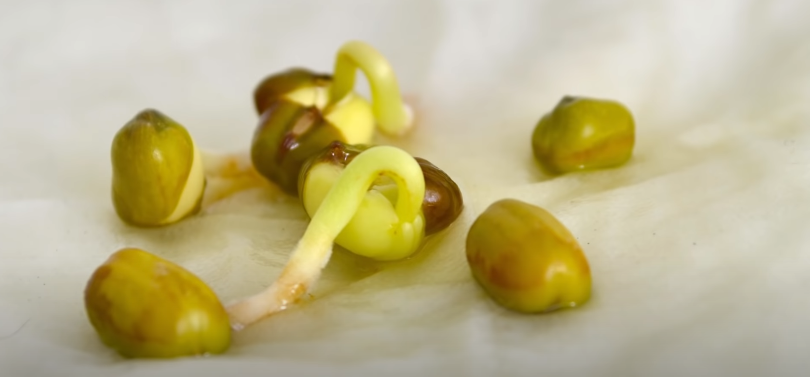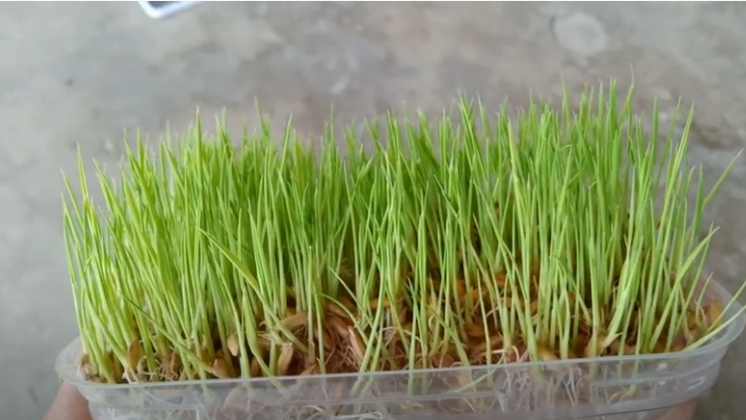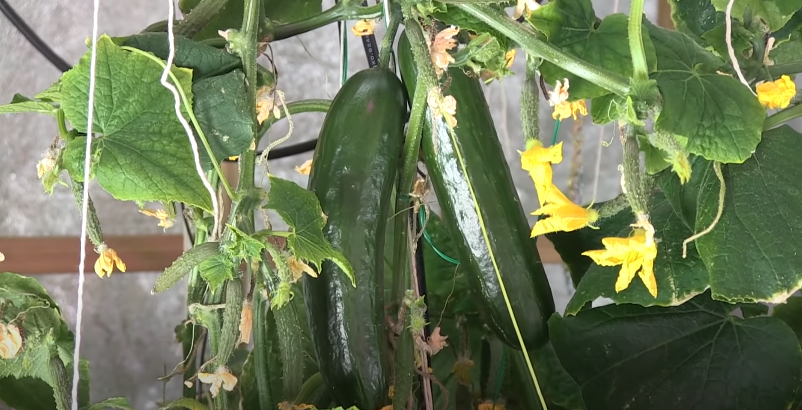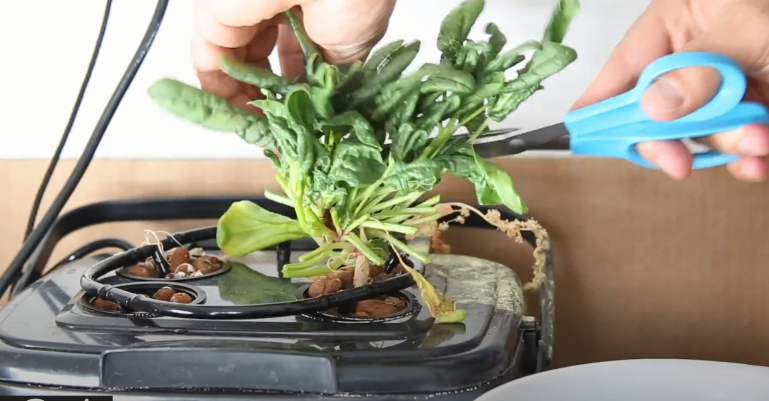Growing plants without soil – or using Hydroponic – may be beneficial in several factors, but it also concerns you on other factors, such as Hydroponic Nutrients.
Since all dirt contains essential nutrients served by nature, your hydroponic plants cannot attain them naturally. It is when hydroponic nutrients come into use.
Hydroponic nutrients are not the usual commercial fertilizer. The latter does not contain the essential factors required, while the former does.
It comes in formulation for specific systems containing soluble natural elements needed by the plants.
Within a growth cycle, plants need diverse doses of hydroponic nutrients as they reach each stage. Many store-bought come with labels of ‘bloom’ or ‘grow’ on the pack.
Therefore, it will not be a difficult task to differentiate them, even for novices.
It is significant to rotate the types of hydroponic nutrients within the cycle to avoid any depletion of the required elements.
Replacing the solution after a certain amount of time will do, just take note that the nutrient-water portion should be consistent in ratio. Otherwise, you would not want to know.
Plant Development Stages
Q: What nutrients should I use for hydroponic?
A: The hydroponic nutrients you should use are according to what stage your plant develops.
The element needed when it is still in the germination phase, for instance, is different from when it reaches early growth. Further information is as follows.
1. Germination

You have to deal with the germination stage if planting hydroponically from seed is how you start it. It means you do not transplant seedlings from the usual method of growth.
Since seeds keep nutrients in store, any external sources are unnecessary until they use up all of the nutrients stored inside.
Furthermore, growing seeds indoors is easy by using a glass jar. Choose a planting medium such as pebbles, gravel, sand, or sawdust.
Then, directly sprinkle the seeds to the growing media without worrying about spacing hydroponic seed during the germination process.
2. Early Growth

Not long after the germination phase, they reach the stage of early growth. You will know it from the changing size.
The growing cases may vary in each plant. Take note that under proper care, hydroponic plants grow ¼ times faster than those that arise in soil.
When your plants have started to grow, add nutrients in about 1/8 strength until you witness the appearance of true leaves in this phase.
Bear in mind that it should be in a small amount so that it does burn up your fragile and tender plant.
Once they grow two sets or more true leaves, increase the nutrients portion to ¼ strengths. Do it while observing whether there are any unusual signs, such as curling or browning.
If such a condition appears, stop the nutrients and add pure water until your plant reaches the maturity stage.
3. Maturity

The next stage in the plant cycle is maturity. It is when you can identify which species is what since they are visible resembling their mature specimen.
They will have their cultivar characteristics within this phase, such as flowers in flowering plants and fruits in fruitful ones.
Drain the solution from the early growth phase once this maturation hits the starting point and add the completely new one in a little bit more than full strength.
How to grow leafy plants hydroponically include giving a larger nitrogen portion since it helps the leaves’ development.
Meanwhile, fruit-bearing plants, like eggplants, tomatoes, and cucumbers, for instance, require less nitrogen but need more of the other nutrients.
4. Harvest

It is easier to harvest hydroponic plants than soil ones for some reasons. However, a couple of days before harvest time, flush your plants with plain water to remove any deposition of minerals and salts.
Do they need more nutrients during this stage?
Well, it depends on the harvested-to-be parts of the plant. Fruit-harvest plants require hydroponic nutrients in abundant amounts.
Meanwhile, for foliage-harvest plants, like cabbage, spinach, and lettuce, no further nutrients giving is necessary since it can produce bitter-tasting leaves.
Please take note that you should harvest them when they prepare to grow flower stalks and do not wait until they are ready to seed bolting. Otherwise, you will get nasty tasting produces.
Ceasing Nutrients
Store-bought hydroponic fertilizers are available for purchase in concentrated form. You should mix it in water based on the instructions from the manufacturers on the package.
Of course, different plant conditions require diverse solution strength.
– Weaker solution is ideal for newly planted cuttings, growing vegetations with poor lighting, or overheated garden plants.
– Regular solution is just right for healthy plants under normal conditions.
– Stronger solution is perfect for plants on a garden scale, especially if yours has good air circulation and lighting as well as capable of bearing high volume growth.
Gradually increasing the concentration of hydroponic nutrients will decrease the damage possibility. Alternatively, you could determine the portion yourself after taking several experiments on a few plants.
Well, it is better than ‘harvesting’ an entirely burned garden. Below are the conditions you should pay attention to regarding hydroponic nutrients.
1. Solution Temperature
You should keep the solution in temperature ranges from 65°F to 75°F (around 18°C to 24°C), any higher than 75°F can lead to the growth of fungi, bacteria, and algae inside.
Besides, a hot solution can burn mild roots. Meanwhile, nutrients with lower heat than 65°F can shock your plants to slow down their development or, worse, kill them.
2. PH Value
Check your plant pH one hour after giving the nutrients. For most plants, the tolerance ranges between 5.5 and 6.0. Nonetheless, the varying value may apply.
3. Aeration
Aerating the solution nonstop will give you at least three benefits. You will get maintained hydroponic nutrients and oxygenated roots.
Besides, there will be no anaerobic bacteria since you discourage their growth.
You do not need the advanced and expensive setup to aerate your solution. Cheap stone filters and aquarium pumps used in most fish tanks will be more than just do.
4. Tap Water
Tap water is usually chlorinated. If you happen to have it for your hydroponic system, filter it beforehand and let sit for 2–3 days before use. That long time is necessary before the chlorine completely dissipates.
Homemade Vs. Pre-Made
Now, after knowing the plant phases and conditions for hydroponic nutrients, we will get down to this question:
Can you make your own hydroponic nutrients?
The answer is yes, you can. However, between the pre-made and homemade nutrients, you should know which one is the most beneficial for what hydroponic method.
For hobbyists and small farm practitioners, for instance, pre-mixed powder or liquid is ideal.
Pre-mixed products come in some packs, which is the perfect amount to spend for every planting. It is also easy to make since the only thing to do is dilute it in the water with the proper portion.
The usual dose for each concentrate per liter is 3.5 mL, but double-checking the instruction will not hurt.
Do not forget to check the pH after mixing and letting it sit for a couple of minutes. In the cases of hydroponics, most manufacturers usually have hydroponic nutrients sold in twin or triple pack.
It is similar to a series of skin-care products of the same brand. That is the case for pre-mixed nutrients, whereas it is different for homemade fertilizers.
Farms on a larger scale commonly mix their own, adjust the requirements of their growing plants, and utilize concentrates in bulk amount per compound.
Nonetheless, if you feel comfortable and safe in mixing your hydroponic nutrients even for a small farm, please feel free to do so.
Just pay attention to the elements involved in the solution as a nutrient deficiency could happen.
What is the Best Organic Hydroponic Nutrients?
The best hydroponic nutrients should consist of magnesium, fulvic acid, calcium, nitrogen, potassium, and phosphorus. Humboldts Secret Base A and B Bundles are liquid fertilizers that work great.
The essential nutrition helps your plants to flourish. Also, you can use these products for all varieties. In addition, they are compatible with all growing media.
Nutrient Deficiencies
Sixteen elements are necessary for plants to grow. Among them, calcium, magnesium, nitrogen, phosphorous, and potassium are the five most determining factors. Below is the explanation.
1. Calcium (Ca)
In cell formation, calcium holds an essential role to form pectate. It comes in handy to strengthen the plants’ cell wall and bind one cell to another.
2. Magnesium (Mg)
Magnesium is significant in sugar synthesis and photosynthesis processes.
Being the chlorophyll molecule’s central element, it accommodates the plant’s NPK (nitrogen, phosphorous, and potassium) uptake.
Magnesium is also the one stored in seeds and the sole reason why plants in the germination phase do not need any external nutrient sources.
3. Nitrogen (N)
This element supports the foliage growth. That is why a higher portion of the nitrogen is good for leafy plants, while it is not the case for fruits and flowers bearing vegetation.
4. Phosphorous (P)
Phosphorous is in charge of strengthening the structure of the plants’ roots and producing healthier seeds. This element is also significant for cell division, energy transport, respiration, and photosynthesis.
5. Potassium (K)
This element is significant for the development of fruit and flowering. Thus, high content of potassium is necessary for vegetations producing fruit and growing flowers.
6. Other Nutrients
The other eleven nutrients needed to encourage the plants’ flourishing are
- Boron (B),
- Carbon (C),
- Chlorine (Cl),
- Copper (Cu),
- Hydrogen (H),
- Iron (Fe),
- Manganese (Mn),
- Molybdenum (Mo),
- Oxygen (O),
- Sulfur (S), and
- Zinc (Zn).
Possible Trouble
Common but minor problems that you might face are over-fertilizing and nutrient deficiency.
If plants get too many fertilizers than they should have, it shows from the foliages’ tips. They curl upwards and become brown.
To solve over-fertilizing cases, making weaker nutrients concentration and flushing the container with it will be enough.
Meanwhile, to overcome deficiency problems, you should make the solution with a somewhat strong concentration of the element your plant lacks.
Thus, diagnosing the lacking element must come first. Suspect that your plant lacks major nutrients if the browning and curling symptoms occur on old foliage and minor nutrition if they happen to the new leaves.
Additionally, providing sufficient hydroponic direct light is necessary, whether you apply the drip system or other methods.
Above all, hydroponic nutrients become the determining factor of the well-growth no-soil plants. The portions given are different based on the plant development stage and the growing individual species.